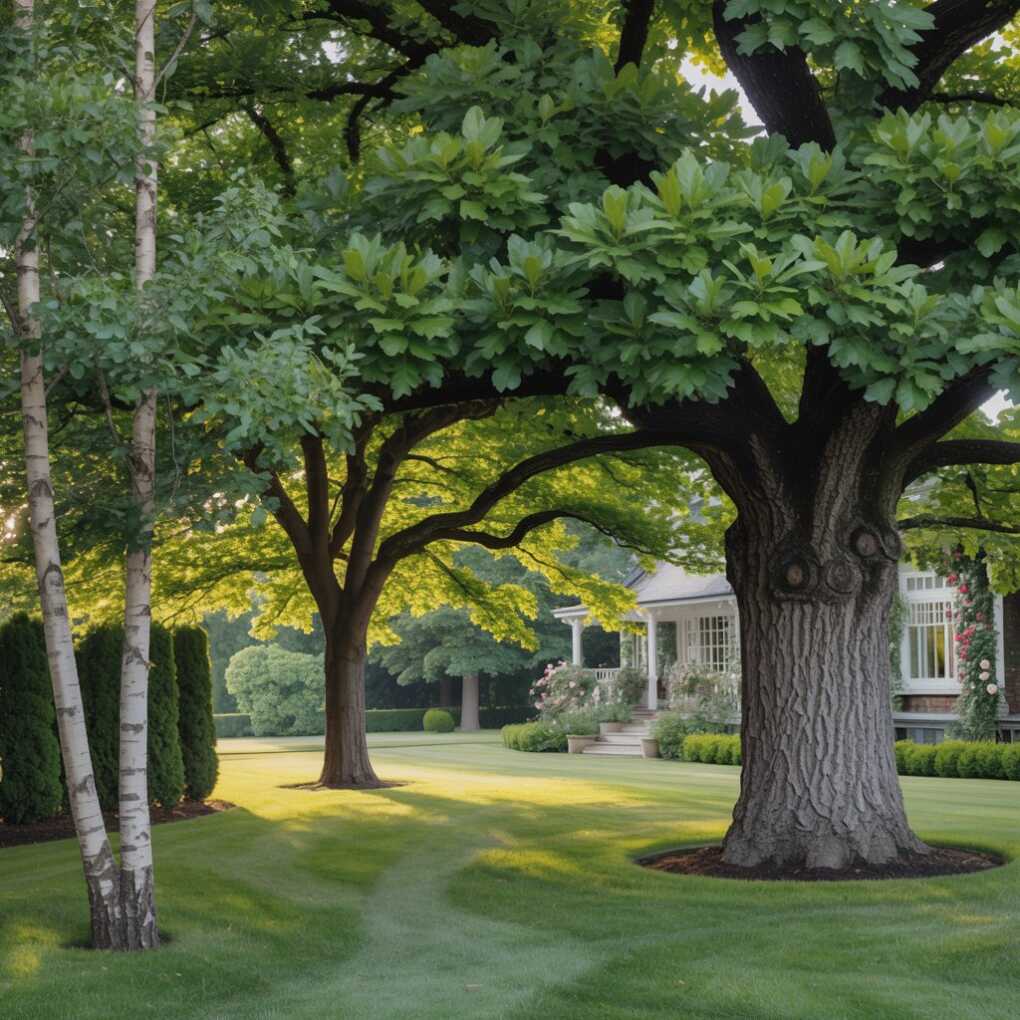The modern backyard has evolved from a patch of grass and a barbecue to a true extension of the home – a place to relax, entertain, and find a moment of calm. And just like the interior of your home, the outdoor space deserves thoughtful design. While furniture, lighting, and landscaping play their roles, trees are often the unsung heroes of great outdoor living spaces.
To learn how to get it right, we consulted with the team at Melbourne Tree Service, a trusted local business with over 13 years of experience helping homeowners across Victoria create beautiful, functional yards. Below, we break down how to select trees that not only thrive in your environment but also enhance your outdoor lifestyle with shade, privacy, and visual appeal.

Shade: Nature’s Air Conditioning
When it comes to comfort outdoors, nothing beats natural shade. Not only does it cool your space on hot days, but it also protects furniture, reduces glare, and invites you to spend more time outside. Choosing the right shade tree involves more than just picking something big. You’ll want to think about canopy spread, growth rate, deciduous vs. evergreen, and long-term maintenance.
Top Shade Trees for Melbourne Climates:
- Chinese Elm (Ulmus parvifolia)
Known for its wide canopy and fast growth, the Chinese Elm is drought-tolerant and well-suited to urban environments. Its graceful arching branches offer generous coverage without the heavy leaf drop of some natives. - Jacaranda (Jacaranda mimosifolia)
With its stunning purple flowers in late spring and soft, filtered shade, this tree is ideal near patios or decks where you want sun protection without feeling enclosed. - Lilly Pilly (Syzygium smithii)
A native evergreen with a dense, glossy canopy, Lilly Pillys double as shade providers and privacy screens.
“Plant larger shade trees to the north or northwest of your space to block summer sun while still letting in winter light. Consider deciduous species if you want sun in winter and shade in summer.
Privacy: Block the World, Keep the Peace
The backyard should feel like a retreat, but that’s hard to achieve when neighbours can see into your space. Trees are a natural and more aesthetically pleasing alternative to hard fencing, and the right species can also help with sound insulation and wind protection.
Best Trees for Privacy in Melbourne Yards:
- Blueberry Ash (Elaeocarpus reticulatus)
This native evergreen grows up to 8m tall, with fine leaves and soft pink flowers in spring. It’s perfect for screening without creating a wall-like effect. - Portuguese Laurel (Prunus lusitanica)
Fast-growing and dense, this tree has shiny green foliage and small white flowers. It’s ideal for hedging or growing as a stand-alone privacy tree. - Claret Ash (Fraxinus angustifolia ‘Raywood’)
Offers summer shade and vivid red-purple foliage in autumn. While deciduous, its elegant branching still provides visual separation even when leafless.
For a more natural, lush look, use a mix of tree heights and textures. Combining underplanting like shrubs or tall grasses adds depth and softens the barrier effect.
Style: Trees as Living Design Elements
Beyond their practical uses, trees can be powerful visual features in your garden design. Their shape, foliage, bark, and seasonal colour can all contribute to the overall aesthetic — whether you’re going for Mediterranean elegance, modern minimalism, or native bushland charm.
Trees That Add Visual Impact:
- Japanese Maple (Acer palmatum)
Perfect for smaller yards or courtyards, this slow-growing tree offers architectural branching and fiery red or orange foliage in autumn. Works beautifully as a focal point in a curated space. - Olive Tree (Olea europaea)
With silvery leaves and gnarled trunks, olive trees lend Mediterranean sophistication. They’re drought-tolerant, low-maintenance, and work well in both traditional and contemporary gardens. - Crepe Myrtle (Lagerstroemia indica)
Available in a variety of colours, this multi-season tree offers textured bark, summer flowers, and vibrant autumn foliage — ideal for breaking up hardscapes or softening paved areas.
Use uplighting or soft fairy lights to highlight sculptural trees in the evening, turning your trees into statement features even after dark.
Considerations Before Planting
Before you run to the nursery, it’s important to plan. The wrong tree in the wrong spot can cause future headaches — from invasive roots near pipes or foundations to overcrowding or blocked views.
A few things to keep in mind:
- Root spread: Avoid planting large trees near underground services or house foundations.
- Growth rate: Fast-growing trees can provide quick results, but often require more maintenance.
- Mature size: Always check how tall and wide a tree will grow — a small sapling can become a 20m giant over time.
- Leaf drop: If you want a low-maintenance yard, steer clear of trees known for heavy leaf or fruit drop.
Consulting with a local expert ensures you’re choosing species suited to your soil type, drainage, and microclimate. They can also help with correct planting and pruning techniques to ensure longevity and optimal growth.
Final Thoughts: Trees that Transform
Trees aren’t just “nice to have” in a landscape — they’re fundamental to how a space looks, feels, and functions. A well-placed tree can cool your space naturally, offer tranquil privacy, and elevate the design of your entire yard. When planned thoughtfully, trees become a seamless part of your outdoor living area — as essential as the patio furniture or the pergola.
If you’re unsure where to begin, don’t guess — reach out to professionals like Melbourne Tree Service who understand the local conditions and can help you choose trees that are as practical as they are beautiful. With the right guidance, your backyard can become your favourite “room” of the house — leafy, private, and designed for year-round enjoyment.
